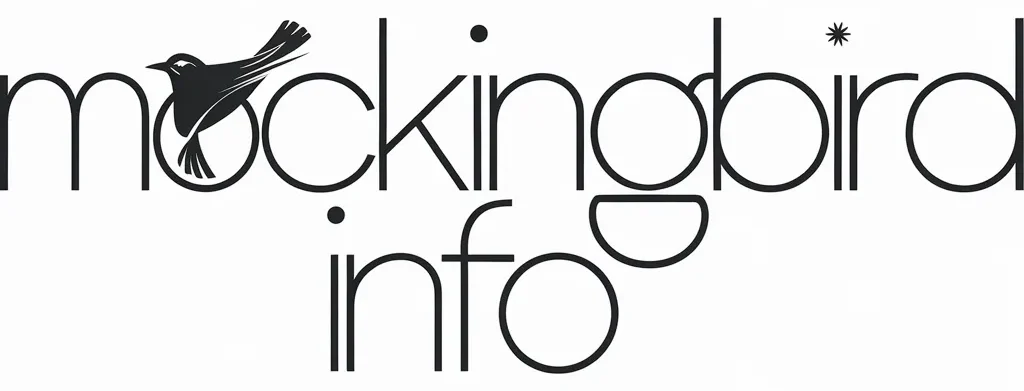“To Kill a Mockingbird” is often described as a book that goes beyond just a good read—it is a book that shapes lives. When you read Harper Lee’s novel, it doesn’t just stay on the pages of the book; it lingers in your mind and heart, influencing how you see the world and interact with others.
For many, the emotional journey through the lives of Scout Finch, her father Atticus Finch, and the misunderstood Boo Radley provides profound lessons about racism, justice, and humanity. The novel’s impact is undeniable—it’s a book that sparks change in readers’ perspectives and encourages empathy for people who are often misunderstood or marginalized.
The reason this book should be taught in schools is clear: its themes are as relevant now as they were when it was first published in 1960. The story centers around the trial of Tom Robinson, a black man falsely accused of raping a white woman, and through this story, Lee masterfully exposes the racism and social injustices embedded in society.
These issues are timeless, making the novel an essential part of modern education. The lessons it imparts about moral courage, standing up for what’s right, and having empathy for others are the foundation of what every student needs to develop not only as a thinker but also as a compassionate human being.
By teaching “To Kill a Mockingbird”, schools provide students with the necessary tools to think critically about the world around them, understand the importance of social justice, and recognize how individuals can shape the course of history. The novel isn’t just a historical artifact; it’s a vibrant, living lesson about humanity.

Contents
- 1 Timeless Themes
- 2 Literary Significance
- 3 Educational Value
- 4 Conclusion
- 5 FAQs
- 5.1 1. Why is “To Kill a Mockingbird” considered an important book in education?
- 5.2 2. How does the novel teach empathy?
- 5.3 3. Can this novel still be relevant today?
- 5.4 4. How does the book help students think critically?
- 5.5 5. What makes the character of Atticus Finch so important?
- 5.6 6. Is “To Kill a Mockingbird” still relevant today?
Timeless Themes
Racism and Prejudice are at the heart of the novel. Through the trial of Tom Robinson, the story lays bare the deep-seated racial inequalities of the time. Tom is a black man falsely accused of raping a white woman, and despite the overwhelming evidence that proves his innocence, the jury convicts him simply because of his race.
This serves as a harsh commentary on the way racism permeates every facet of society, from the justice system to social relationships.
For students, particularly those in diverse or historically disadvantaged communities, reading this will provoke critical discussions about racial prejudice, showing that racial inequalities remain relevant issues today, from criminal justice reform to societal perceptions of minorities.
The loss of innocence is another significant theme. As Scout and Jem grow up in a world that is constantly divided by race and class, they must learn to navigate complex moral landscapes. Their experience is one of coming face-to-face with the harshness of human nature, while also learning that not everyone acts with integrity.
For many students, this moment in the novel mirrors their own personal journey of understanding how the world really works, as they transition from childhood to adulthood. The lesson of losing innocence is particularly significant for young readers, as it encourages them to think about how they want to grow into morally responsible adults.
Moral Courage shines through in the character of Atticus Finch. He takes on the defense of Tom Robinson, knowing the case will be divisive and dangerous. Despite the personal risks, he stays firm in his belief that justice must prevail, regardless of public opinion.
This theme of standing up for what is right, even in the face of adversity, provides students with a powerful role model for the importance of having the courage to act morally. In a world where compromise is often seen as necessary for success, Atticus remains steadfast, offering a model of integrity that students can apply in their own lives, particularly when faced with difficult choices.
Finally, empathy is a key lesson in the novel. One of the most memorable lessons taught by Atticus to his children is to always try to see the world from the perspective of others, particularly those who are marginalized.
This lesson encourages students to understand that people’s actions and behaviors are shaped by their life experiences, which are often vastly different from their own. The novel asks readers to take the time to listen to others and be open to perspectives that challenge their own biases and assumptions. This lesson in perspective-taking is more important than ever in our globalized, multi-faceted society.
Literary Significance
Character Development in “To Kill a Mockingbird” is one of the novel’s strongest aspects. Every character, from Atticus Finch to Scout to Boo Radley, is richly developed, making them feel real, complex, and human.
Atticus represents justice and morality, showing the moral complexity in standing up for what is right despite facing ridicule. Scout, the narrator, gives the reader an innocent yet perceptive view of the world as she grows up.
Boo Radley, initially a source of fear and mystery, is revealed to be one of the novel’s most empathetic and selfless characters. These complex characters are more than just plot devices—they are embodiments of the human experience, teaching valuable life lessons.
The narrative style of the novel adds to its literary brilliance. Written in the first-person, the story is told through Scout’s eyes, which allows the reader to experience her gradual understanding of the world.
This perspective is crucial because it blends childlike wonder with growing moral awareness, and it highlights how complex issues like racism and injustice are not always immediately apparent to a young child.
This duality allows the novel to speak to both young and mature readers, as it demonstrates the shift from innocence to experience in a way that is both accessible and emotionally resonant.
Symbolism plays a crucial role in the novel’s impact. The mockingbird, which symbolizes innocence and goodness, appears repeatedly throughout the novel, emphasizing the theme of unjust harm to those who mean no harm to others.
This symbolism is particularly evident with characters like Tom Robinson and Boo Radley, who are both misunderstood and victimized by society despite having no ill intentions. The novel’s use of symbols reinforces its deep thematic concerns and makes it a compelling subject for literary analysis.

Educational Value
Promoting Critical Thinking is one of the significant ways the novel contributes to a student’s education. It forces readers to think beyond the surface level, to question the motivations and actions of characters, and to reflect on societal values.
By analyzing Atticus’s defense of Tom Robinson or the trial’s unfairness, students engage in discussions about how prejudices shape laws, beliefs, and behaviors, developing essential skills in critical thinking.
In addition, “To Kill a Mockingbird” fosters empathy and tolerance. By confronting racism, prejudice, and injustice, students learn the importance of accepting others for who they are, no matter their background.
This helps build understanding and respect in diverse classrooms, allowing students to better navigate a world where differences are sometimes viewed with suspicion or hostility. The novel acts as a bridge to understanding across cultures and communities.
The novel also provides the opportunity to discuss social justice. By examining the failure of the justice system in the trial of Tom Robinson, students can learn how they, too, can be involved in creating a more just world.
They can explore modern-day issues like civil rights, gender equality, and immigration, understanding how literature reflects reality and can influence positive change in society. Social responsibility is an important lesson for young readers, empowering them to take action in their own communities.
Moreover, reading and analyzing this novel helps students develop essential literary analysis skills. It’s not just about enjoying a good story—it’s about understanding symbolism, character development, plot structure, and thematic depth.
By engaging with the text critically, students enhance their reading comprehension and their ability to articulate ideas through essays, discussions, and presentations.
Conclusion
In conclusion, “To Kill a Mockingbird” is not just a book; it is a transformative tool that teaches readers about empathy, justice, moral courage, and critical thinking. The lessons it imparts about racism and prejudice are as vital today as ever, and by incorporating it into school curricula, educators are providing students with the foundation to navigate a complex, diverse world.
Its literary significance and educational value ensure that it remains a cornerstone of American literature.Though some criticize the novel for its outdated language or its portrayal of race, these critiques do not diminish its power to teach.
Instead, they provide opportunities for deeper discussion and reflection on how far we’ve come—and how far we still have to go.
By teaching “To Kill a Mockingbird”, schools foster a generation of students who are not only intellectually engaged but also morally conscious and prepared to make a difference. It’s a call to action for the next generation to be bold in their fight for justice and equality.
FAQs
1. Why is “To Kill a Mockingbird” considered an important book in education?
It teaches valuable lessons about racism, empathy, and justice, which are essential for students to understand in today’s world. It also promotes critical thinking and helps students develop literary analysis skills.
2. How does the novel teach empathy?
Through the character of Atticus Finch, students learn the importance of seeing the world from others’ perspectives, which helps build tolerance and understanding in diverse communities.
3. Can this novel still be relevant today?
Yes, the themes of racism, social justice, and moral courage remain just as important today, and the novel provides opportunities for discussions about modern social issues.
4. How does the book help students think critically?
By analyzing the actions of the characters and examining the themes of the novel, students are prompted to ask deeper questions about the world around them and to think about how they can make a difference in society.
5. What makes the character of Atticus Finch so important?
Atticus is a model of moral integrity and courage, standing up for what is right even in the face of public opposition.
6. Is “To Kill a Mockingbird” still relevant today?
Yes, the themes of the novel continue to resonate with current social issues such as racism and inequality, making it timeless.








